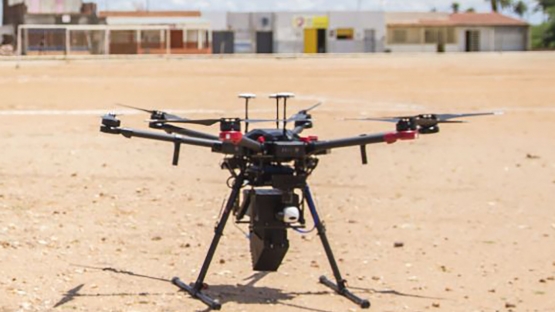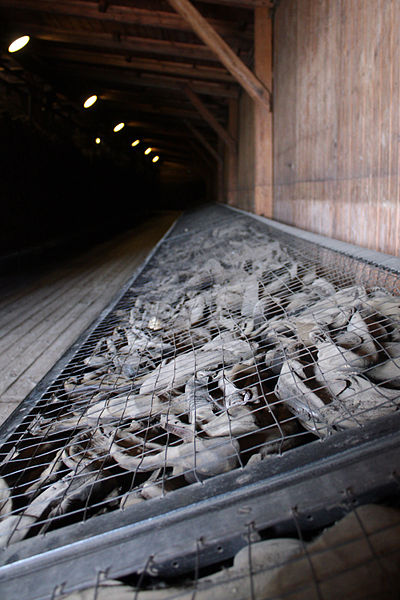What can nuclear technology do?
Controlling the spread of disease, helping doctors diagnose and treat patients, powering space exploration; the uses of nuclear technology are varied – and life-changing.
Nuclear saves lives
Every year, nuclear medicine helps doctors diagnose and treat tens of millions of people. Using radiation, such as X-rays, doctors can make quick, non-intrusive and accurate diagnoses of a patient’s organs. Radioisotopes, which can be produced by nuclear reactors, are used as ‘tracers’ in positron emission tomography (PET) scans, one of the most accurate means of detecting and evaluating most cancers.
The use of radiation therapy (radiotherapy) can cure many different types of cancer, as well as other conditions, such as Graves’ disease (the most common cause of hyperthyroidism). In the case of cancer, most cancerous growths are sensitive to radiation. There are numerous different treatment options, either with external or internal radiation, with the aim to control or eliminate the cancer by irradiating the area containing it. One example is brachytherapy, where small radiation sources are placed inside the body, either in or nearby the area that requires treatment. Radiation can also be used as a non-invasive alternative to brain surgery.
Nuclear allows us to explore the universe
Exploration of our solar system is enabled by nuclear technology through the use of radioisotope thermoelectric generators (RTGs), which rely on the decay of radioactive isotopes to power satellites for deep-space exploration where solar panels cannot be used. RTGs have been one of the main power sources for space work and have powered numerous American, Russian and Chinese space vehicles’ exploration of space.
The satellite Cassini revealed Saturn and its rings in unprecedented detail, and found evidence hinting at the potential conditions for life in the subsurface oceans of one of the its moons, Enceladus; the New Horizons spacecraft brought the first detailed image of Pluto; and the Curiosity rover continues to explore Mars. All these missions have relied on nuclear technology.
Probably most impressive, however, are the twin probes Voyager 1&2, which, due to their plutonium power sources, are the first man-made objects to enter interstellar space. Forty-two years after they were launched, Voyager 1&2 continue to push the boundaries of deep space exploration, all thanks to radiation from their plutonium-based batteries.

The Curiosity Rover (Image: NASA)
Nuclear avoids food waste
Nuclear technology helps us to avoid wasting food. Currently, one-third of food produced worldwide is wasted – despite one-in-nine people suffering from chronic undernourishment. As the world’s population increases, the need to increase food production will put significant pressure on water and land resources.
Most food wastage, however, occurs after the point of harvest. At least 20% of harvested food spoils before it can be consumed. Irradiation – a process which kills microbes, without making the produce radioactive – can delay the ripening of fruit and vegetables, increasing their shelf-life significantly and reducing wastage. It can also control pests and prevent transmission of foodborne illnesses, reducing required quarantine periods – factors that have proved decisive for the more than 60 countries that have introduced regulations allowing food irradiation.

Strawberries after 15 days of storage (irradiated to the right, untreated to the left) (Image: International Atomic Energy Agency)
Radiation is also used to control pests via the sterile insect technique (SIT). This involves rearing and releasing large populations of male insects that have been sterilized through irradiation, thereby dramatically reducing their offspring. The technique is an environmentally friendly way to deal with pests whilst avoiding or reducing pesticide residues on food. There have been many successful campaigns across the world which have suppressed insects threatening livestock and crops, and controlled populations spreading serious disease.

WeRobotics mosquito container and release mechanism for use in SIT programmes (Image: WeRobotics)
Nuclear helps us protect our cultural heritage
Nuclear technology is also used to examine, protect and restore our cultural heritage. Mould is a common threat to, for example, old paintings and books, and if unchecked can permanently destroy historical treasures. By using gamma radiation, it is possible to kill the fungi without damaging the artefact. Similarly, radiation has been essential to protect wood sculptures at risk of degradation from insect infestation.
Radiation has also been entrusted to protect key historical objects. An example of this comes from the State Museum at Majdanek in Poland, one of the concentration camps run by the Nazi regime during the Second World War. In an effort to preserve personal belongings of some of the victims of the Holocaust, some 60,000 shoes were treated with radiation to ensure they would not be destroyed by bacteria or fungi.

Radiation has been used to preserve shoes of Holocaust victims at the State Museum at Majdanek (Image: Von.grzanka, CC-BY-SA-3.0)
Further information
Visit our Information Library to learn more about the many other non-power uses of nuclear technology.